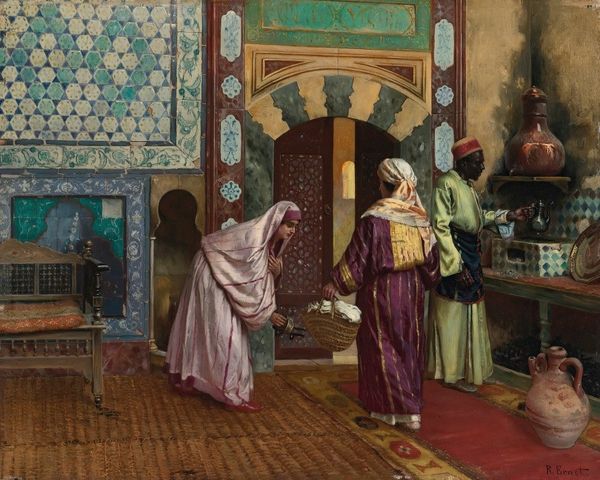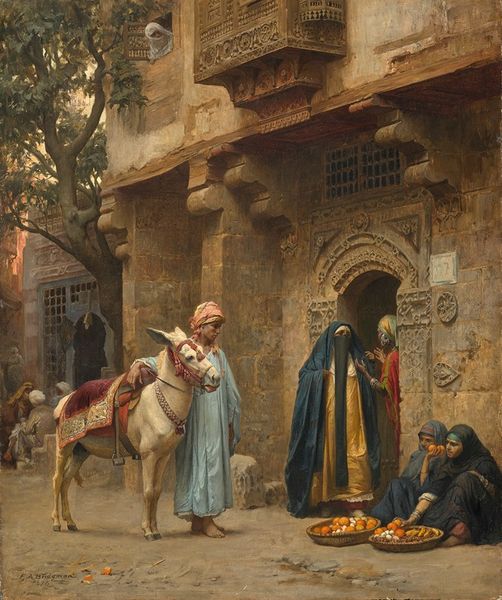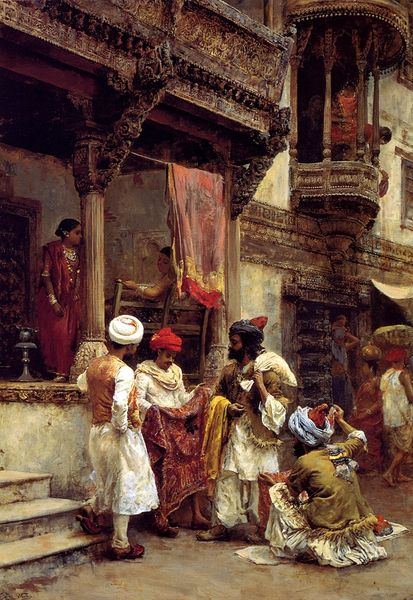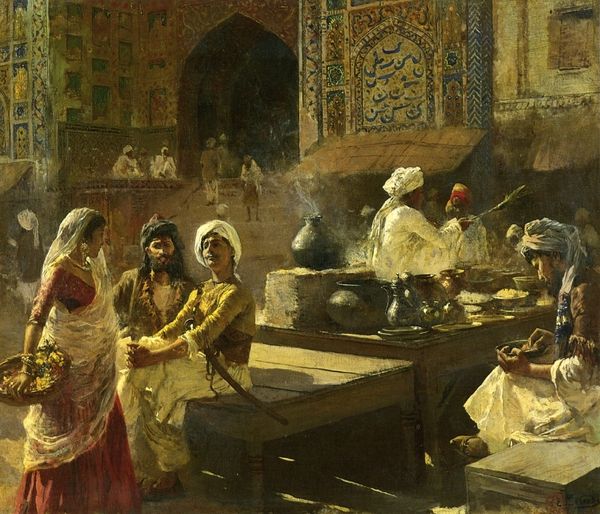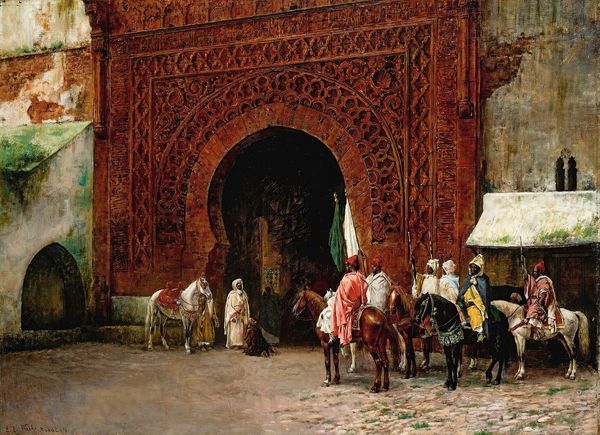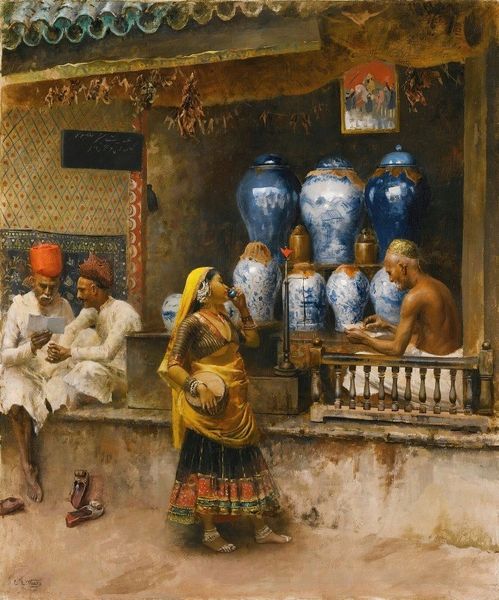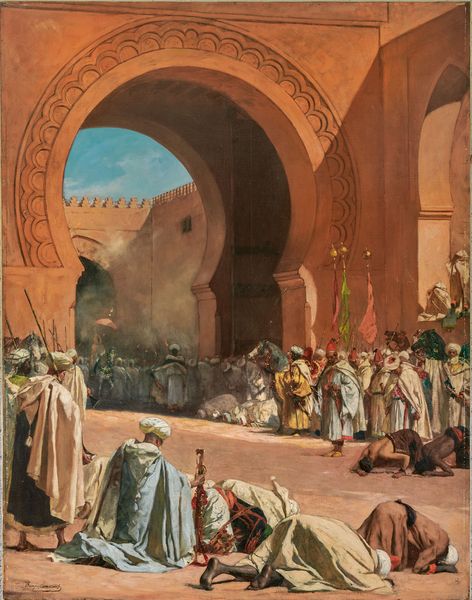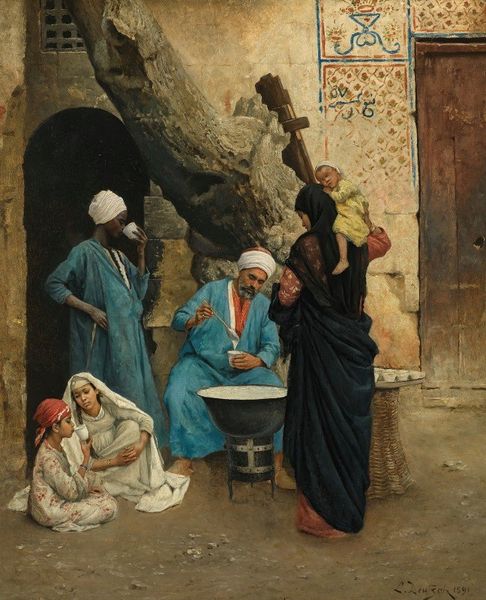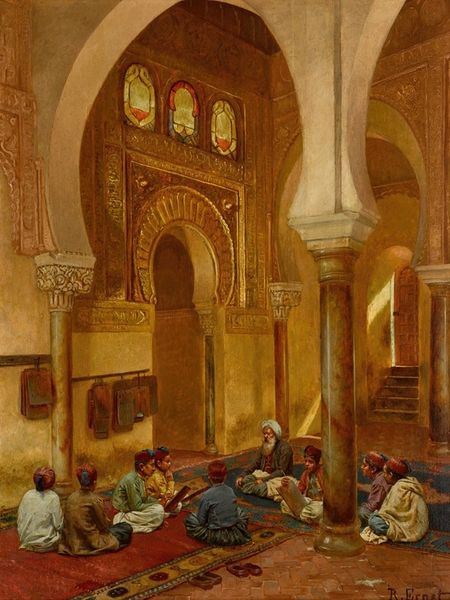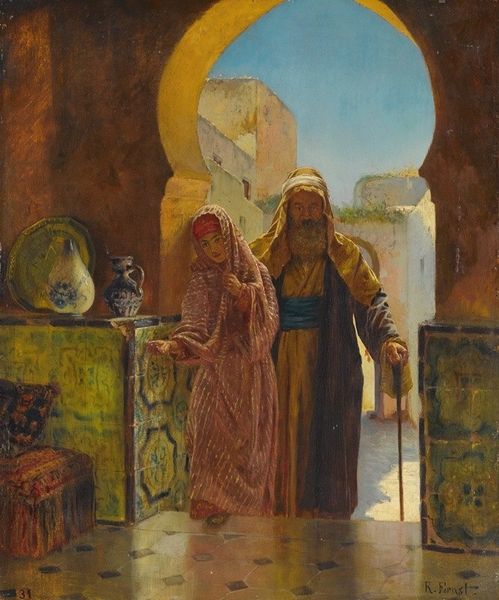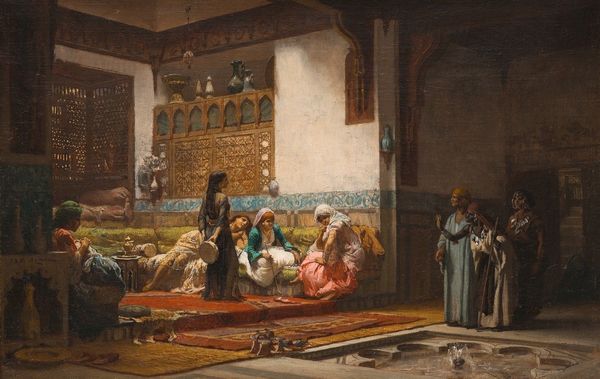
painting, oil-paint
#
portrait
#
painting
#
oil-paint
#
oil painting
#
orientalism
#
islamic-art
#
genre-painting
#
mixed media
Copyright: Public domain
Curator: Welcome. We’re standing before "After Prayers", an oil painting attributed to Rudolf Ernst. Its creation invites a closer look into Orientalist genre painting, quite popular in late 19th century Europe. Editor: The atmosphere strikes me first—the muted colors, the light diffused within the mosque. It’s contemplative, serene, but something feels… curated, almost staged. Curator: You’re picking up on something critical. Ernst, like many Orientalist painters, often relied on studio reconstructions, incorporating objects and models to construct an idealized image of the ‘Orient.’ Editor: So, we’re not necessarily getting an authentic glimpse into Islamic worship or culture, but a European interpretation or projection of it? The men at the ablution fountain seem to perform the scene. Curator: Exactly. These works tell us more about the European gaze and its fascination with the "exotic." The architecture is rendered beautifully but the figures appear almost as props. Ernst did not just reproduce what he saw. His visual language served a certain agenda. Editor: What about the power dynamics? The figures are all men. How does this choice affect the interpretation, or perhaps exclude other voices? Is it perpetuating existing notions of that culture's socio-political reality? Curator: Indeed. The painting reinforces gendered spaces and erases female experiences. The lack of diverse representation perpetuates historical silences. Editor: That's what truly resonates with me—the underlying messages, the subtle reinforcements of colonialist viewpoints. While it's aesthetically pleasing and technically skilled, it's essential to unpack its historical baggage and its effect on current perceptions. Curator: I agree completely. Recognizing the layers of representation in a painting such as this prompts critical inquiry. It shows how images are not merely mirrors, but active participants in shaping perceptions of power, identity, and otherness.
Comments
No comments
Be the first to comment and join the conversation on the ultimate creative platform.
